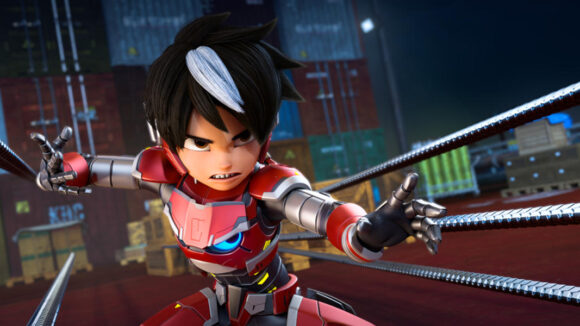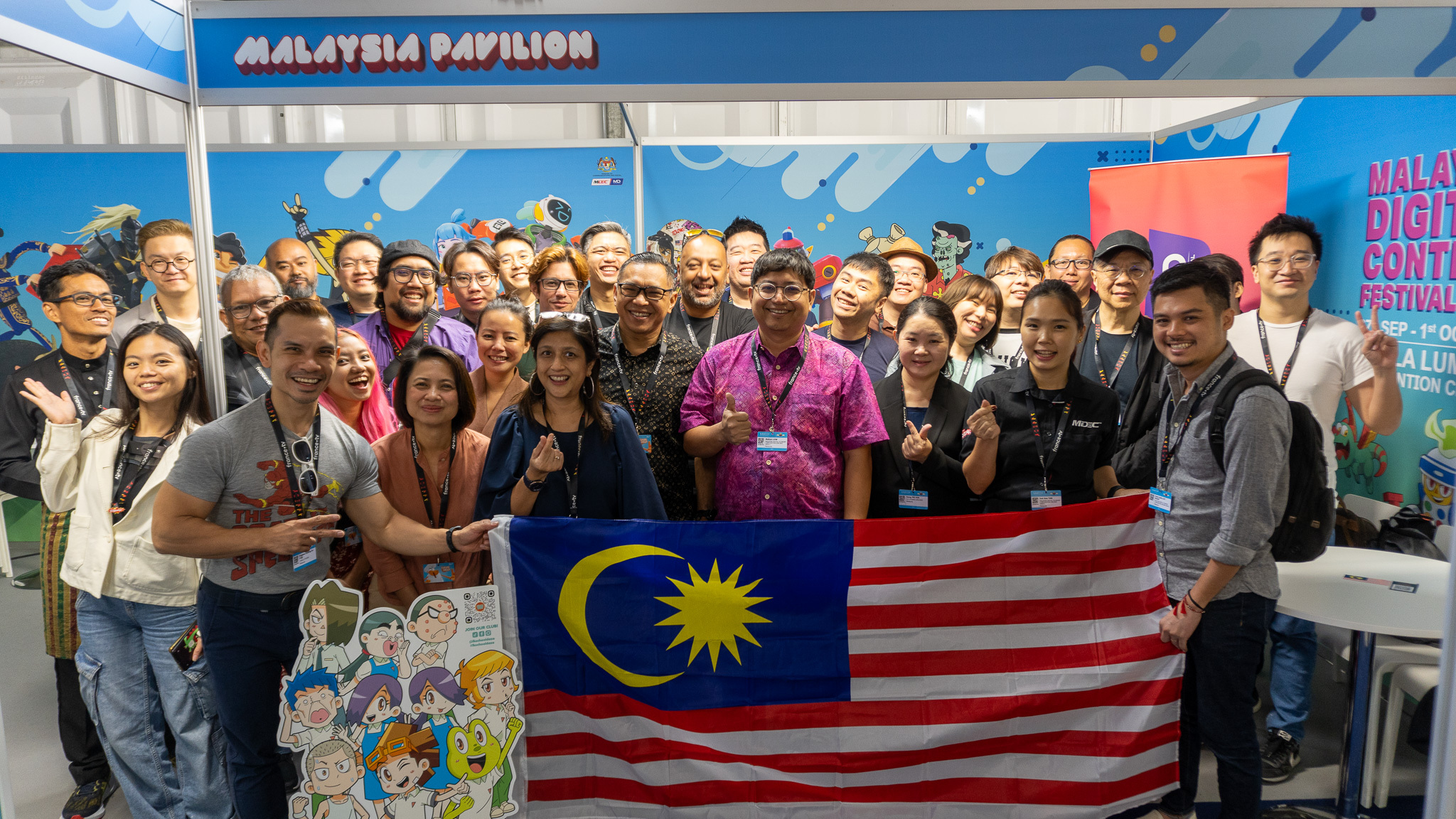

Malaysia: Southeast Asia’s Ever-Evolving Animation Hub
Powered by competitive incentives for local and international companies, a young and talented workforce, and progressive government culture programs, Malaysia has become a quiet giant global animation.
Experienced in both for-hire contract work and original production, the country has become the largest animation producer in Southeast Asia and is regarded as the hub for its regional industry.
Malaysia’s animation industry was valued at over $1.6 billion in 2020, with exports in the sector of more than $285 million, doubling numbers from 2014. Studios produced more than 65 original pieces of intellectual property which sold in more than 120 countries, creating nearly $40.5 million in export value.
Malaysia’s Driving Force for Animation
Malaysia’s position at the head of the pack in Southeast Asia is largely due to the efforts of the Malaysia Digital Economy Corporation (MDEC), a government agency launched in 1996 that operates under the purview of the Ministry of Communications and Digital. The organization has served to unite the region’s digital industries – animation, video games, vfx, and digital media – and has been a catalyst for tremendous growth.
One of the most significant initiatives at MDEC, and of particular interest to the animation sector, is the Digital Content Creators Challenge, a platform for artists to hone their creativity and accelerate the development of digital content. This year, projects were selected from four categories and will begin production next month.
- Digital Comic – Artists receive up to RM 25,000 (USD $5,480) to spend six months working on a digital comic which must be at least 50 colored pages or 128 individual digital comic strips/webcomics.
- Animation – Selected animators are backed with as much as RM 100,000 (USD $21,900) to create a finished short film, pilot episode, or sizzle trailer.
- Interactive Media – Up to RM 100,000 (USD $21,900) is provided to artists who have 10 months to create a working proof of concept for an interactive project.
- Digital Games – Developers have 10 months and RM 100,000 (USD $21,900) to put together a completed commercial-ready digital game.
Full details for the Digital Content Creators Challenge can be found here.
MDEC Investment
MDEC funds projects mainly through its Digital Content Grants, subsidies of varying sizes targeted at different stages of the creation process, including development, and production. When the program first launched, MDEC often subsidized as much as 90% of production costs. That number has since dropped by more than half as production companies and broadcasters have become more confident in investing in animation from the region.
Malaysian Benefits
Malaysia offers production companies a competitive 30% cash rebate to produce animated content in the region, with an additional 5% going to projects that demonstrate a strong local cultural element. Numerous global media giants have benefited from the scheme so far, including the likes of Gaumont, Cartoon Network, and Hasbro.
The country also has a large, diverse, and well-trained talent base that is capable of executing almost any job imaginable. In its most recent Southeast Animation Study, MDEC found that studios in Malaysia and Southeast Asia at large had employees with expertise in a wide range of fields including animators, modelers, compositors, designers, producers, cg specialists, vfx, and more.
Case Studies
Malaysian original IP success stories include, but are in no way limited to, Animonsta’s BoBoiBoy; Warnakala Studios’ Didi & Friends, Les’ Copaque’s Upin & Ipin, and Animasia Studio’s ABC Monsters. These characters have become household names in Malaysia and have found extended success in neighboring countries and further abroad. Upin & Ipin was adapted as a feature that became the first SE Asian animated film to qualify for the Oscars, a major milestone for the burgeoning region.
Not only a push phenomenon inspired by artists and studios, Malaysian animation benefits from a rabid fanbase that is eager to see content produced by local studios. Four of the top 10 all-time highest grossing Malaysian films are animated: Upin & Ipin: Keris Siamang Tunggal (10), BoBoiBoy Movie 2 (8), Ejen Ali: The Movie (7), and Mechamato Movie (5).
Regional Context
Malaysia is doing big things on its own but also stands at the vanguard of a rapidly evolving and growing regional industry in Southeast Asia.
There is a strong Animation tradition in Southeast Asia which dates back more than 80 years. In commercial terms, however, more than half of the region’s animation companies are less than ten years old. That youthfulness also extends into the region’s talent pool, where around 80% of all employees working in animation are 35 or younger.
According to the most recent Southeast Animation Report, cg animation is where most studios in the region specialize, but there is also a strong mix of 2d, vfx, video game, and motion graphic work being done as well.
According to Jared Lee at The Grim Film (Horologist):
Most people overlook Southeast Asia because we are yet to be known since we have no ‘famous’ IPs from this part of the world. But what the world doesn’t know is that a lot of animators and illustrators for known animation and triple-A games are partially made in the region. This proves that we can stand with the rest of the world if given the right opportunity.
Networking
Malaysia Digital Content Festival (MYDCF) is an annual gathering for developers and consumers held in Kuala Lumpur. The get-together hosts more than 20,000 attendees who can see what’s going on behind the scenes at more than 140 companies from around the world. This year’s event runs from September 27 – October 1 at the Kuala Lumpur Convention Centre.
- Kre8tif! – The oldest MYDCF sidebar, Kre8tif! Was established in 2009 and has become one of the most important business networking events in the region.
- Level Up KL – Launched in 2015, Level Up is the video game answer to Kre8tif!, featuring keynotes, networking events, and roundtables featuring leading industry members from around the world.
- ImmerseKL – Just launched last year, ImmerseKL is an industry-focused conference for all things blockchain, Metaverse, and Web3.
- Mydcf – Mydcf is a B2C platform that gives consumers an inside look at digital content being developed in the region. Participants can test the latest games, sneak a peek at upcoming animation, and interact with popular creators, musicians, influencers, and other fans.
Malaysian delegates often travel abroad as well. This year’s delegate at the Annecy Festival was the largest ever, with representatives from 26 companies in attendance alongside MDEC CEO Mahadhir Aziz. Malaysian representatives also worked in conjunction with those from other ASEAN countries to host two South East Asian Partners Pitch events.

Looking Forward
One of the most significant challenges facing the Malaysian and larger Southeast Asian industries is scale. According to MDEC, most studios in the area tend to be small-to-medium sized and employ 50 workers or fewer. Only around 15% have more than 100 workers, making it easier to do contract work for hire than to try and produce an original film or series, which would require a much larger workforce. Most outsourced work being executed in the region comes from companies in the U.S., China, and Japan.
That said, the region has seen steady growth in its original IP output, and thanks to strong education and training programs in the area, studios are growing and producing more of their own content. In 2018, only about 33% of SE Asian countries were working on their own original IPs. Now, that number is closer to 50%, and the country produces more than 65 original animated properties which have sold to more than 120 countries.
Pictured at top: Mechamato Movie

.png)



